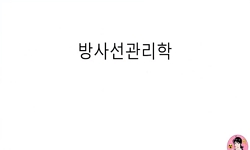Duck viral hepatitis is an acutic, highly infectious viral disease of young ducklings. The most practical means for controlling duck viral hepatitis is the vaccination of ducklings or of a breeding stock. We attempted to develop a vaccine strain of du...
http://chineseinput.net/에서 pinyin(병음)방식으로 중국어를 변환할 수 있습니다.
변환된 중국어를 복사하여 사용하시면 됩니다.
- 中文 을 입력하시려면 zhongwen을 입력하시고 space를누르시면됩니다.
- 北京 을 입력하시려면 beijing을 입력하시고 space를 누르시면 됩니다.


국내 분리주를 이용한 오리 바이러스성 간염 생백신주의 개발 = Development of a live vaccine strain of duck viral hepatitis using a Korean isolate
한글로보기https://www.riss.kr/link?id=A106132665
-
저자
성환우 (국림수의과학검역원) ; 김재홍 (국림수의과학검역원) ; 송창선 (국림수의과학검역원) ; 한명국 (국림수의과학검역원) ; 이윤정 (국림수의과학검역원) ; 모인필 (국림수의과학검역원) ; 김기석 (국림수의과학검역원) ; Sung, Haan-woo ; Kim, Jae-hong ; Song, Chang-seon ; Han, Myung-guk ; Lee, Youn-jeong ; Mo, In-pil ; Kim, Ki-seuk
- 발행기관
- 학술지명
- 권호사항
-
발행연도
2000
-
작성언어
Korean
- 주제어
-
등재정보
SCOPUS,KCI등재
-
자료형태
학술저널
- 발행기관 URL
-
수록면
110-116(7쪽)
- 제공처
-
0
상세조회 -
0
다운로드
부가정보
다국어 초록 (Multilingual Abstract)
Duck viral hepatitis is an acutic, highly infectious viral disease of young ducklings. The most practical means for controlling duck viral hepatitis is the vaccination of ducklings or of a breeding stock. We attempted to develop a vaccine strain of duck hepatitis virus (DHV) using a Korean isolate by serial chicken embryo passages. The propagation of DHV in chicken embryos was carried 140 passages. After the $50^{th}$ passage, of which the virus was non-pathogenic for ducklings, approximately every $20^{th}$ passage of the virus was tested for vaccinal efficacy. Both the $70^{th}$ and $90^{th}$ passage of the virus gave good protection against challenge infection to a DHV-DRL reference strain(type 1) and a virulent Korean isolate. The $110^{th}$, $125^{th}$ and $140^{th}$ passage of the virus were less protective than the $70^{th}$ and $90^{th}$ passage, which means that more than $110^{th}$ passage may lead to over-attenuation of the virus. Ducklings vaccinated with the chicken-embryo-adapted virus by oral, intramuscular or eye drop administration showed earlier resistance to challenge infection from 3 to 7 days postvaccination. Of the above methods, ducklings vaccinated intramuscularly presented the most rapid resistance against challenge. The minimum immune dose of the chicken-embryo-adapted virus in ducklings was also studied. Ducklings inoculated with a dose of $10^{2.0}\;ELD_{50}$ and below were not fully protected against challenge with a virulent DHV, showing a protection rate of 67% to 73%, but ducklings inoculated with a dose of $10^{3.0}\;ELD_{50}$ and over were completely protected. The virus yield of the chicken-embryo-adapted DHV was examined at 24hrs and 48hrs of the incubation time in the allantoic fluid, embryo head and embryo minus head of the embryonating egg. In all three components, the titer of the virus was higher at 48 hours than that at 24 hours after incubation. And the titer of the virus was higher in the embryo minus head, embryo head and the allantoic fluid, in order. Field trials for evaluating the efficacy of the attenuated DHV as a live vaccine were done in duck farms with about 25% mortality of flocks resulting from duck viral hepatitis. After the use of the experimental vaccine, the mortality due to duck viral hepatitis was dramatically reduced in the farms. These results indicated that the attenuated DHV using a Korean isolate could be a good candidate as a live vaccine strain of DHV in Korea.
동일학술지(권/호) 다른 논문
-
백급수침이 HCl-aspirin으로 유발된 십이지장 궤양에 미치는 조직학적 및 면역조직화학적 연구
- 대한수의학회
- 구세광
- 2000
- SCOPUS,KCI등재
-
절수에 의한 mongolian gerbil 종뇌 및 간뇌에서 dopamine성 면역반응세포의 분포변화
- 대한수의학회
- 송치원
- 2000
- SCOPUS,KCI등재
-
- The Korean Society of Veterinary Science
- 이형식
- 2000
- SCOPUS,KCI등재
-
Holstein 송아지의 두얼굴증(Diprosopia) 1례
- 대한수의학회
- 김종섭
- 2000
- SCOPUS,KCI등재




 ScienceON
ScienceON DBpia
DBpia





